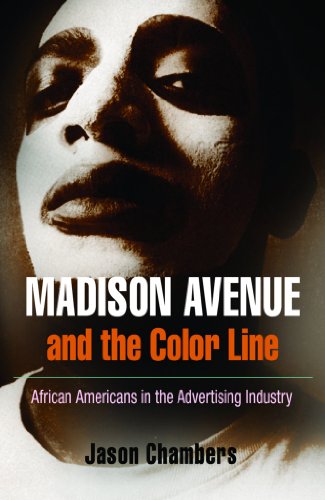Madison Avenue and the Color Line: African Americans in the Advertising Industry
amazon.com
Madison Avenue and the Color Line: African Americans in the Advertising Industry

Robert Balderston of the National Dairy Council told Barnett: “Every time that I have an opportunity to survey the American market field I am renewedly impressed with the promotional possibilities of the Negro market. I feel as if we had somewhat neglected the cultivation of a group of people who are liberal spenders insofar as they have money to
... See moreAfrican Americans in the advertising industry were in the unique position of being creators and interpreters of black life and culture. In these roles they actively defined the meaning of “black consumer” for both prospective clients and the public. Additionally, they presented conspicuous consumption to blacks as a means to both middle-class
... See moreIn Making Whiteness, Hale explained that the growth of consumer culture provided blacks with a host of physical spaces, such as stores or trains, within which to challenge their status as second-class citizens. This work takes her argument a step further. Just as consumer culture in general gave blacks spaces within which to challenge their social
... See moreRobert Weems pointed out in his pioneering study of black consumerism, Desegregating the Dollar, blacks tried throughout the twentieth century to use their economic power to gain respect. But they fought for a recognition of dignity that went beyond mere appreciation for their economic ability to buy consumer goods. For example, few whites are
... See morePositive and realistic images of African Americans could not only reflect the levels of their penetration into different areas of American life, that is; they could also ease white acceptance of them in those once closed areas.7
“Ideologies are often latent or unrecognized; they are taken for granted as real, commonsense, or natural. The structure of ethnic, gender, and class inequality is justified as being profoundly destined by nature.” Advertisements confirm to the viewer the current ideologies about race and the place of blacks in society. Yet, even in lieu of this
... See moreHistorian Roland Marchand theorized that advertisers worked in the framework of a “market democracy,” in which one dollar equaled one vote. Within this structure those with more money had more votes than others, and those groups received more active attention from advertisers; in contrast, advertisers left those with little or no money or influence
... See moreIn the first years of the twentieth century one influential copywriter, John E. Kennedy, offered a simple, yet still suitable, definition of advertising: Advertising, he said, is “salesmanship-on-paper.”4 Whatever a salesperson might say to a customer on the sales floor, whether selling cars, clothes, automobiles, soda pop, or something else, that
... See more